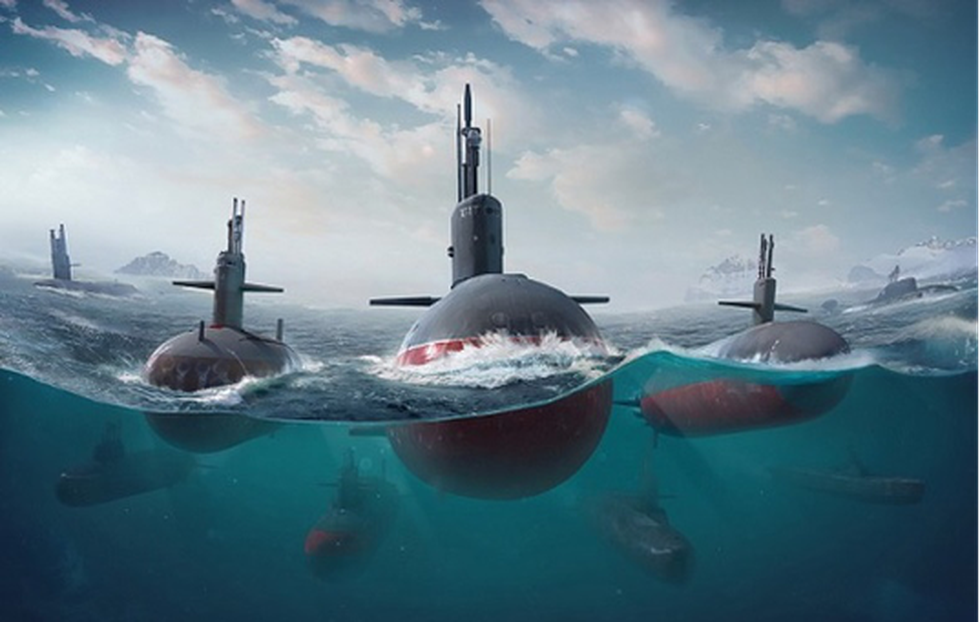About:
There are two types of submarines:
- Conventional or Diesel-electric submarine: They need atmospheric oxygen to run the diesel generator which in turn charges the batteries.
- Nuclear Submarine: It is a submarine powered by a nuclear reactor, but not necessarily nuclear-armed. They have considerable performance advantages over conventional submarines.
What is an AIP?
- With the emergence of submarines, there was a problem finding satisfactory forms of propulsion underwater.
- AIP is mostly implemented as an auxiliary source, with the traditional diesel engine handling surface propulsion. Most of these systems generate electricity, which in turn drives an electric motor for propulsion or recharges the boat’s batteries.
- AIP allows longer submergence than a conventionally propelled submarine. A typical conventional power plant provides 3 megawatts maximum, and an AIP source around 10 per cent of that. A nuclear submarine’s propulsion plant is much greater than 20 megawatts.
Key features of AIP system:
- It allows the submarines to stay for longer hours in water. The submarines need to come to the surface of the water to charge their batteries. This is reduced by AIP System.
- It decreases the noise levels made by the submarines. This makes it hard to detect the submarines.
Types of AIP:
- Open-cycle systems
- Closed-cycle diesel engines
- Closed-cycle steam turbines
- Stirling cycle engines
- Fuel cells
DRDO is using the fuel cells-based AIP System. It is unique as the hydrogen is generated onboard. The plant was operated in endurance mode and max power mode as per the user requirements. The system is being developed by Naval Materials Research Laboratory (NMRL) of DRDO.
